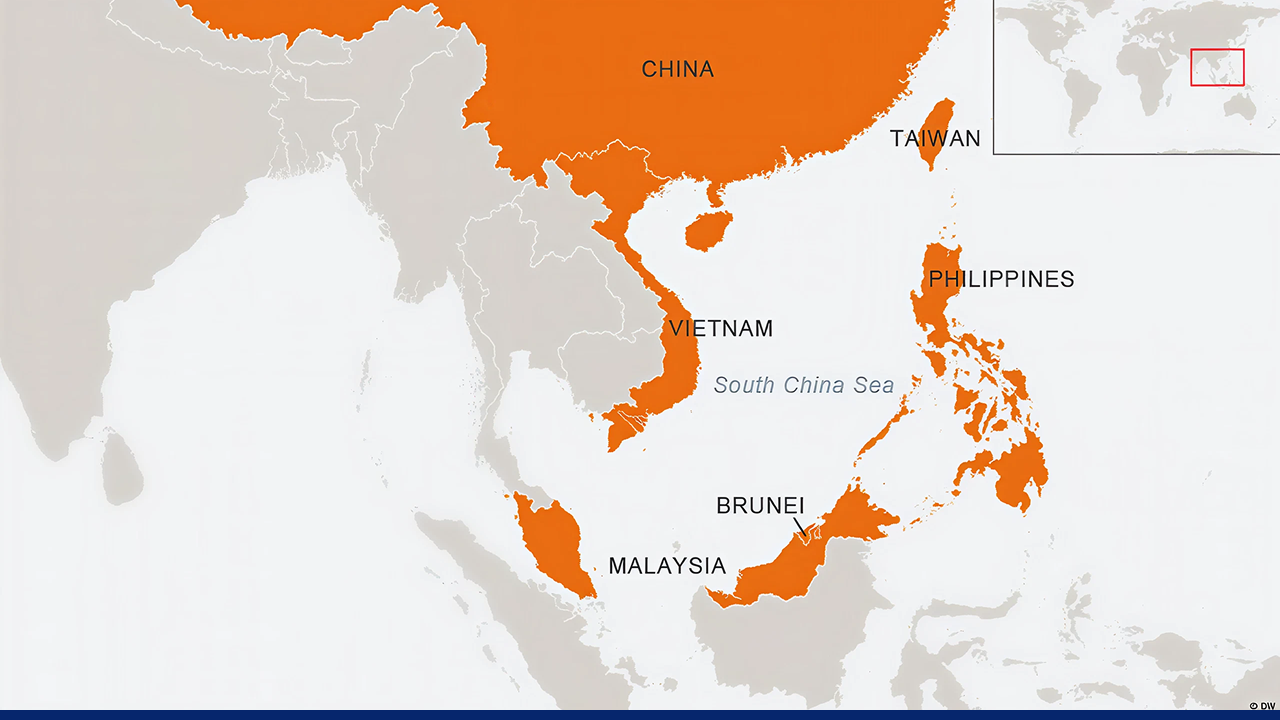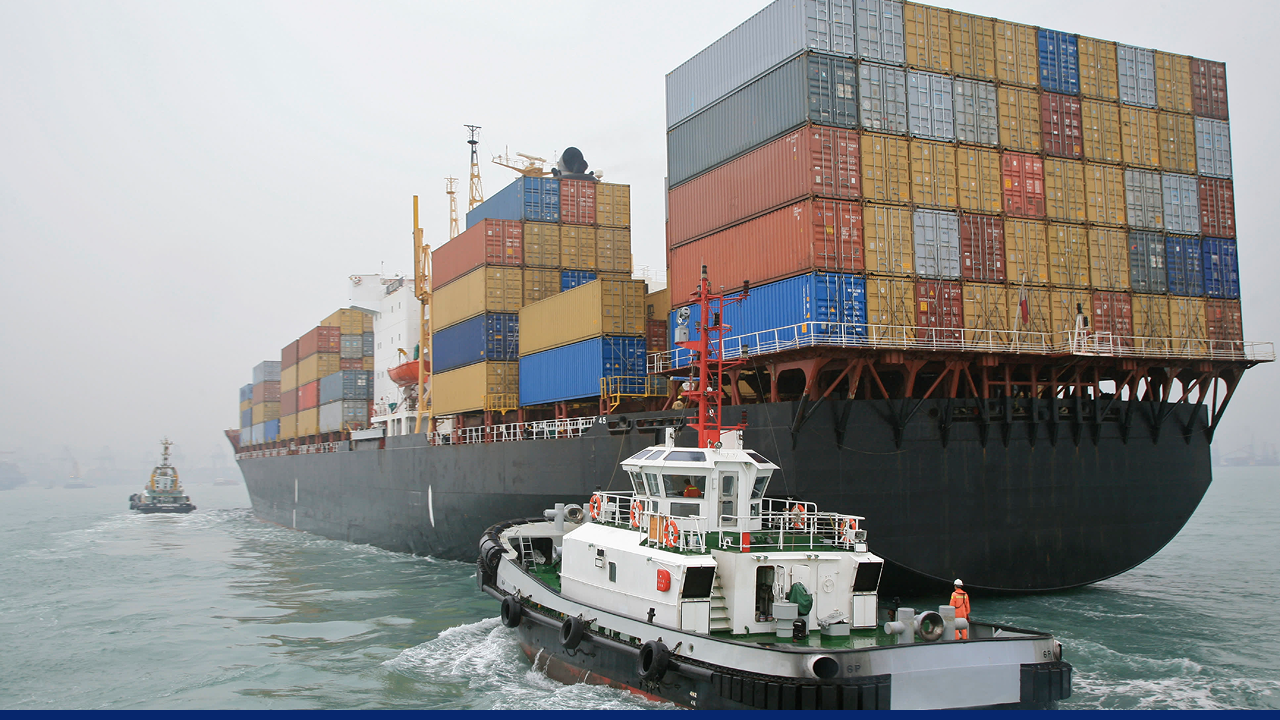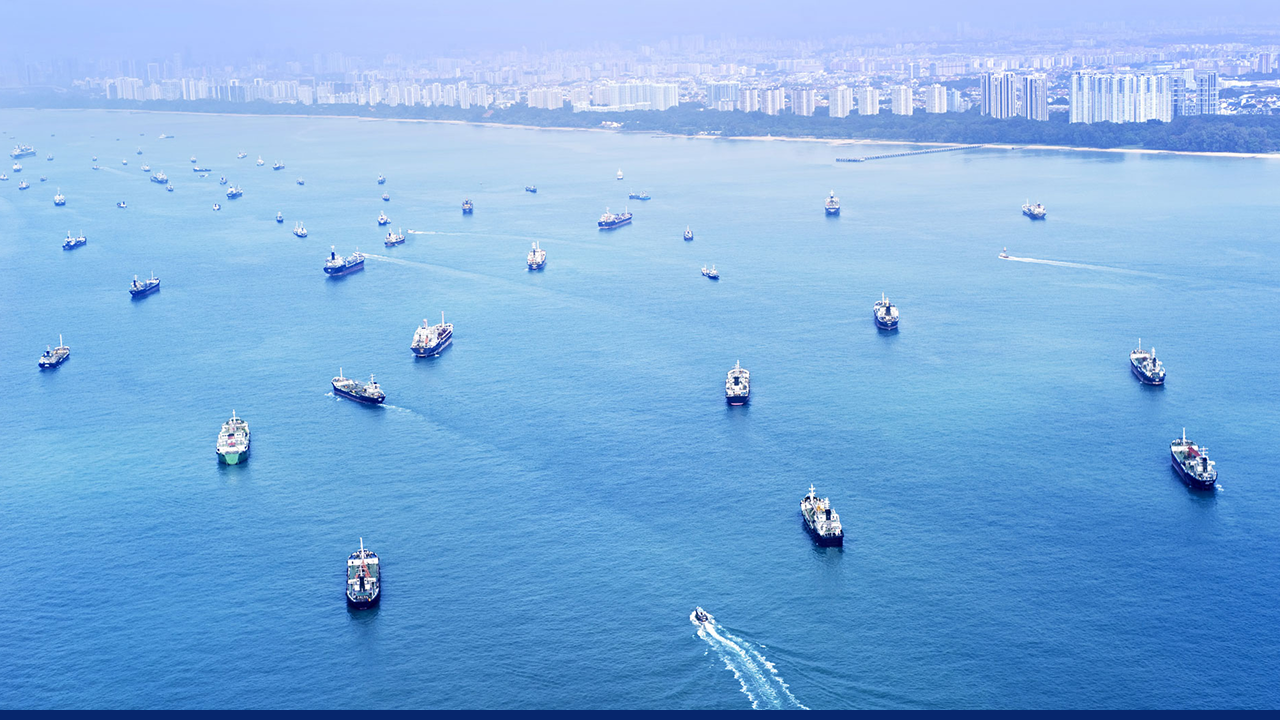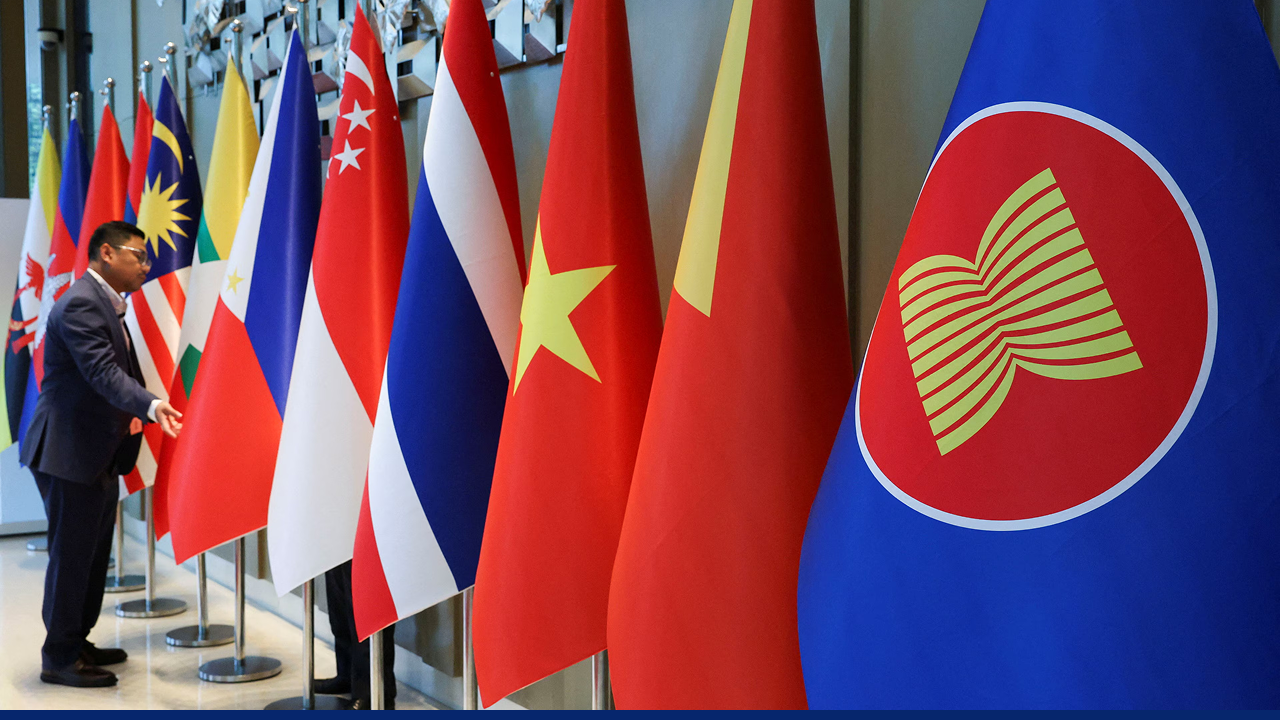28 Oct 2025
7 MIN READ
The South China Sea
Summary
The South China Sea is one of the world's major geopolitical hotspots, connecting major Asian economies to global markets. Rich in energy resources and fisheries, it fuels both economic growth and geopolitical competition. However, overlapping territorial claims, rising militarization, and environmental pressures threaten its stability. Despite tensions, international law and cooperation efforts continue to guide dialogue, aiming to balance sovereignty, security, and sustainability.

While media attention focuses on China and the Philippines’ heated dispute, Vietnam is quietly building up its sovereign claims. Credits: Asia Times
Introduction
The South China Sea is a strategic hub in the western Pacific Ocean, vital for global trade and regional economies. Nearly one-third of international maritime trade flows through its waters, connecting East and Southeast Asia to worldwide markets. Beyond trade, its abundant fisheries, oil, and gas reserves elevate its geopolitical and environmental importance.
Geographic and Environmental Features
China, Vietnam, the Philippines, Malaysia, and Brunei border the South China Sea, which spans about 3.5Mn square kilometers with an average depth of 1,200 meters, plunging to over 5,000 meters in the central basin. Connecting to the East China Sea via the Taiwan Strait and to the Pacific through the Luzon Strait, it serves as a crucial maritime route.
The region hosts notable island groups, including the Spratly Islands (including Taiping Island), the Paracel Islands, the Pratas Islands, and Scarborough Shoal, all of which hold ecological and strategic significance.

The United Nations Conference on Trade and Development estimates that over 21% of global trade, amounting to $3.37T, transited through these waters in 2016. Credits: DW
The South China Sea’s tropical monsoon climate is shaped by the northeast monsoon, which brings cooler, drier winters, and the southwest monsoon, which causes heavy summer rains. Typhoons, which occur from June to November, significantly impact shipping, fishing, and coastal communities, influencing both natural ecosystems and human activity in the area.
Economic Importance of the South China Sea
The South China Sea is a vital conduit for global trade, accounting for over $3.4T annually and connecting major Asian economies like China, Taiwan, Japan, and South Korea to international markets, especially via the Strait of Malacca. The region's seabed holds significant oil and natural gas reserves, crucial for meeting rising energy demands and reducing reliance on external sources.

Circumnavigating the South China Sea to avoid conflict would be more expensive for shipping firms, as the waters serve as part of the most direct sea route between the Asian and European continents. Credits: Kevin Phillips/Getty Images
Additionally, its waters support one of the world's most productive fisheries, sustaining millions of livelihoods and contributing substantially to the global seafood supply. However, overfishing and increasing demand pose sustainability threats, emphasizing the region's economic and ecological importance.
Territorial disputes and sovereignty claims
China, Vietnam, the Philippines, Malaysia, Brunei, and Taiwan all claim overlapping parts of the South China Sea, making it one of the world's most contested regions. China’s expansive claim, marked by the nine-dash line, covers much of the sea and conflicts with the exclusive economic zones of the Philippines, Vietnam, and Malaysia.
Diplomatic tensions frequently flare, especially between China and the Philippines, involving patrol clashes and the use of water cannons near disputed areas like the Scarborough Shoal. Taiwan and China also have ongoing territorial disagreements. The submerged James Shoal near Malaysia is another contested site despite its distance from China’s mainland. Most Southeast Asian nations refer to the United Nations Convention on the Law of the Sea, which grants rights to maritime zones based on coastlines.
Interactive map about the claims.
Militarization and Strategic Significance
The South China Sea has become a hotspot of militarization, driven mainly by China's extensive land reclamation over the past decade. Ongoing satellite data analyzed by Amnesty International confirms runways, radar domes, harbors, missile batteries, and hangars on at least 20 artificial islands.
China has transformed reefs and shoals into artificial islands equipped with military infrastructure, including runways for aircraft, deep-water ports, radar systems, advanced missile installations, and surveillance facilities.

The United States is less reliant on the South China Sea, with just over 14 percent of its maritime trade passing through the region. Credits: Getty Images
This buildup significantly strengthens China's territorial claims and enhances its ability to project power across critical maritime trade routes. Control over these islands allows China to monitor regional activities and potentially use these bases as strategic staging grounds in conflicts.
While other claimant nations occupy some islands, their military developments are minor compared to China's. This expanding military presence heightens regional tensions, including with countries like Vietnam, a key Southeast Asian partner.
International Responses
Countries engaged in the South China Sea disputes rely on international law, chiefly the United Nations Convention on the Law of the Sea (UNCLOS), to define maritime rights and boundaries. UNCLOS grants coastal states control over territorial waters and exclusive economic zones, providing mechanisms for peaceful dispute resolution and freedom of navigation.
In 2016, the Permanent Court of Arbitration in The Hague ruled in favor of the Philippines, concluding that China’s nine-dash line lacked legal basis under UNCLOS. The tribunal did not decide sovereignty over islands, focusing instead on maritime entitlements.
Despite being a signatory, China rejected the verdict and continues to assert historic claims. Other claimants, particularly the Philippines and Vietnam, use the ruling to reinforce their diplomatic positions. Prominent global actors, including the United States, Japan, Australia, and the European Union, emphasize adherence to international law.

The world’s first region-wide digital economy agreement, DEFA’s goal is to harmonize digital trade rules and unlock the potential of ASEAN’s digital economy, which is set to double to $2T by 2030. Credits: World Economic Forum
The US regularly conducts freedom of navigation operations to challenge excessive claims, while others advocate for a rule-based order and regional stability. These collective efforts underscore the sea’s critical significance: legally, economically, and strategically.
Regional Cooperation Efforts
The Association of Southeast Asian Nations (ASEAN) plays a central role in fostering dialogue and stability in the South China Sea, providing a platform for claimant states to manage disputes and prevent conflict. A key initiative is the negotiation of a binding Code of Conduct, which aims to establish clear behavioral rules at sea to reduce risks of clashes. Though progress has been slow, it reflects a shared need for guidelines to ease tensions.
ASEAN and China have also considered joint development of resources like oil, gas, and fisheries as a practical compromise, though sovereignty concerns complicate implementation. Divisions remain within ASEAN on handling China’s assertiveness. Ensuring freedom of navigation remains vital for regional security and uninterrupted trade. Despite challenges, ASEAN’s efforts contribute a stabilizing influence amid competing national interests.
Conclusion
The South China Sea stands at the crossroads of commerce, power, and diplomacy. Its significance extends beyond regional boundaries, shaping global trade and security dynamics. Lasting peace will depend on mutual restraint, respect for international law, and deeper regional cooperation. Only through collective commitment to dialogue and responsible stewardship can the South China Sea evolve from a zone of contestation into one of shared prosperity and stability.
People Also Ask
Why is China claiming the South China Sea?
China wants the benefits of the sea, and its assertive claims send a message to Southeast Asia about its position as a regional power.
What's the big deal about the South China Sea?
Because of its economic and strategic importance, it is also home to valuable fishing grounds.
Is the South China Sea the largest sea in the world?
No, it is not. The Philippine Sea is larger, but it does not hold the same importance.
Where is the China Sea?
The sea is in the Western Pacific Ocean, between China and several other Southeast Asian countries.
What is the old name for the South China Sea?
The South China Sea has had several names in the past, the most famous being the “Champa Sea”. Other names include “Nan Hai” and “Mara di Chine”.
